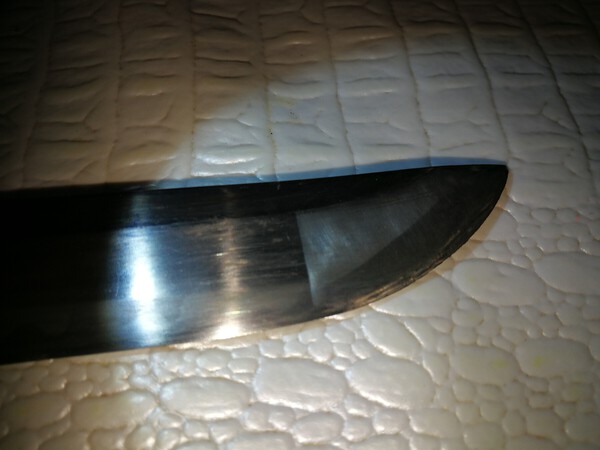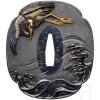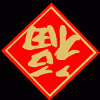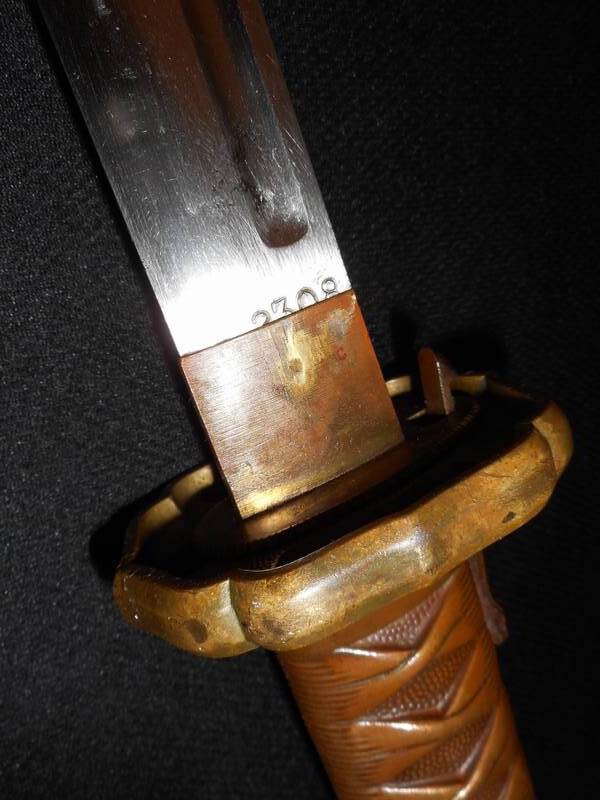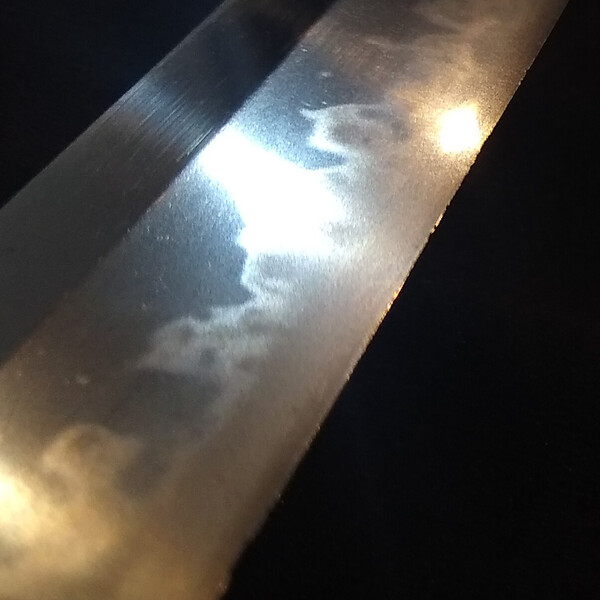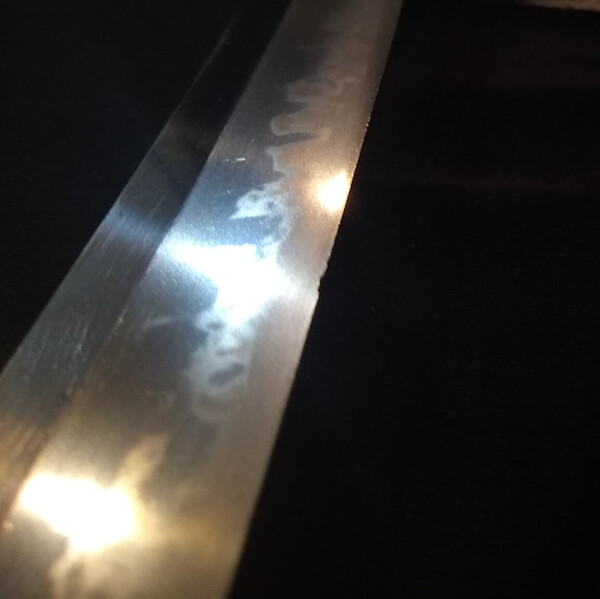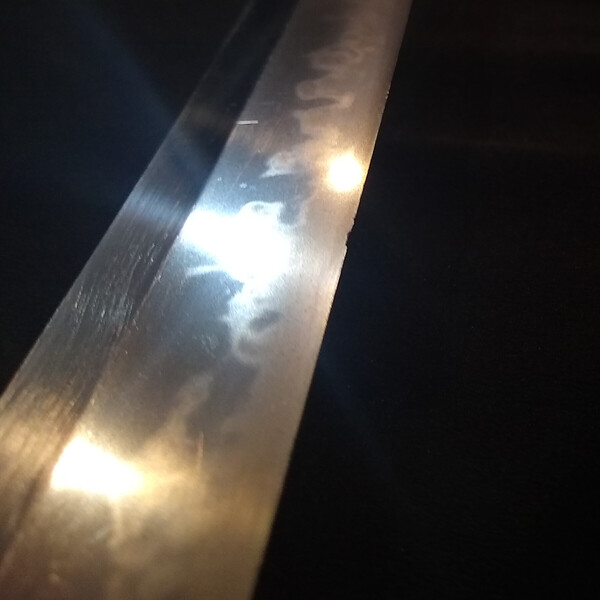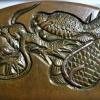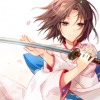Leaderboard
Popular Content
Showing content with the highest reputation on 01/06/2021 in Posts
-
You are asking two possibly complicated questions: value and equivalence. Its not a high value art sword, or even a high value antique, but value is subjective. Despite the funky signature, it does look like an authentic Japanese sword, possibly several hundred years old. Sub $500 on today's market, would be my guess. But I think everyone on this board would cringe at it being called a Walmart sword. Its a real Japanese sword (at least, it looks like one from the pictures), so it has real history, and at one point it had real utility and value. In the hands of a properly trained togishi (polisher), its old glory could well be restored. This is nothing you can buy at Walmart. And we get so many people on the board who proudly post their first purchase, only to find out that it is a Chinese-made replica. You are already through that minefield unscathed, so that's why it feels wrong to write this off as some mass-produced piece of junk. The other thing is: if you (or us) get into the habit of denigrating these old swords, its a very short step to abusing them, subjecting them to the old "sandpaper polish", or otherwise trashing them with the justification that they are "junk".8 points
-
3 points
-
Happy New year folks! Here is a project of mine that I think some might enjoy. This PDF should have all sword related National Treasures (Kokuhō - 122 items), Important Cultural Properties (Jūyō Bunkazai - 792 Items) and former designation Important Art Object (Jūyō Bijutsuhin - 1096 items + 5 EX blades). I have written all of the names in Latin alphabets but I have always included all of the kanji, so you will find lots of signatures in this one. There can be an error or two in the mix as I wrote all of them in by hand and there are thousands of characters to type in. However while doing so I got to check for errors like if years actually are correct, etc. So I kinda did checkup at the same time. There should be 137 Named swords - for which I used term Meitō in this index. There are probably some more in there but for these I have 100% confirmity as I have them in reputable books or online sources from Japan, as well I have the Japanese characters to all of these named swords. How does this work. Well you have 86 pages of swords & items indexed. At first it might seem that there is logic and there is not. First we start with National Tresures, followed by Important Cultural Properties and last the Important Art Objects. This part is logical but the actual placement of items in first two categories are not. As you can see the number in front and you will most likely wonder what it is, here is the explanation for that. I have checked all my data entries to database of Agency for Cultural Affairs. You can find the said database in HERE. They have assigned a number to each item, and I have gone through all the items in crafts section and added them in number by number to make sure there are no duplicates in. The database is only for current designations and as a former category Jūyō Bijutsuhin items are not featured. However I have the old set of books that feature all of the sword related Jūyō Bijutsuhin items, and I have typed them in numerically as they appear in the books. Just note that this is just an index. However you can find some info per item from the database I linked above. Likewise I should have extra information for I guess at least 90% of the swords. But this is just an index and I do have some far superior work in progress to this going on for multiple years. The format is very simple and this should be extremely easy to use. Item number - Item type - Maker - Signature. Few notes, I did not transliterate fitting or koshirae themes as I didn't feel I would get them correct, similarily I didn't type in kinzōgan or kiritsuke mei etc. However for those that I have the data I typed in the kanji so items that you might find interesting you can use the kanji. Same goes for long signatures on the swords. The format is simple, there is just maker and possible year. Signatures are typed in kanji so you can research more on your own. Check it out and I hope it is a fun one, might be totally boring to some. Kokuho & Bunkazai Index.pdf2 points
-
Well, i think i entered the twilight zone by reading this thread.... the stamping on the blade is 2532.... not 2552 !! The Tang is original, with repaired end.2 points
-
Welcome to the NMB Tomas When you are starting out eBay is not the best place to look. There are some good sellers there but there are also a lot of less than good ones and it is a minefield. You would do much better making contact with some local collectors/dealers and there is a strong Australian contingent on this board. Talk to them about what you want and take their advice. The sword you are looking at has some major issues. It may be that it would polish, it depends how deep that heavy rust goes. The cost of doing it would be far more than the current bid price and the results far from certain.2 points
-
2 points
-
2 points
-
I wonder if that Nakago broke while someone was trying to hammer a makeshift mekugi into there? There is a very fine method of laser welding that could satisfy your requirements. It's not 100% perfect aesthetically, but pretty damn good, and it should hold well enough to satisfy your requirements. WARNING to collectors. Not recommended or endorsed for anything other than such emergency repairs as above.2 points
-
There isn't anything suspcious about this sword except the outrageous price.2 points
-
2 points
-
I assume this thread is no longer active and I do not know if I understand it correctly. However, I do know of a set of armor by Myochin Munekane dated 1855. Let me know if you are still looking for it!2 points
-
Hi guys, Years ago I put together a set of flashcards with characters commonly seen in sword signatures. The Kanji were chosen to be relevant, no hello or where is the bathroom please, just those found on swords: smiths' names & titles, provinces, numbers, made by, resident of, and others. 270 cards on card stock, Kanji (written by a classically trained Japanese woman) on one side and English on the other, and since this is writing it is closer to what you see on your swords than print would be. Sets (I have many) can be had for $25 plus post here: https://www.japaneseswordbooksandtsuba.com/store/books/kanji-flashcards If you are interested please contact me by email from my site, not by personal message on NMB (I need your emails to keep track of business). Thanks, Grey1 point
-
1 point
-
Interesting 鉢 stamp on the leather strap. Picture is upside down at the link though. Senior NCO Sword 鉢1 point
-
Rayray is NMB top go to seller. You need a nihonto fix go see Ray if he dont have what your looking im sure he will still help.1 point
-
Now THAT's what I'm talkin' about!!! Ha! You have a nice, old family blade, remounted for the war. Civilian kabutogane (end-cap) and saya (scabbard), with Army menugi, tsuka, seppa, and leather cover. Classic. And yes, NCO's were officially authorized to carry family swords (both short and long) at the end of the war, but they unofficially carried them all the way back to the Sino-Japanese war of the 1920's. Yours seems to have been fitted close to the end of the war based on the nice condition of the leather. You're lucky to have the leather strap with snap. They are usually broken off.1 point
-
Kind of both. It may be a traditionally made Japanese sword but it’s unlikely that there’s any buried treasure there. It’s hard to tell much from the pictures but the fittings look antique ( but pretty rough) so there’s perhaps hope for the blade. Back in the day there were lots of samurai and the majority of them had a cheap work-a-day sword or two and, if not a fake, this is probably one of those. If it is genuine, you haven’t wasted much money and if you have an interest in the subject then the value is on what you might learn from it. When you get it, post some more pictures and I’m sure you’ll get some more information. Don’t be tempted to do any home renovations beyond oiling the blade as modern abrasive products won’t make it better. Don’t clean the tang as the colour there is an indicator of age and removing it destroys an important clue as to that. Welcome to the forum and welcome to the world of Japanese swords - beware and investment of $100 might lead to far greater expense in the future. 😬1 point
-
Me thinks Stegel has x-ray vision! The rework number is indeed 2532. The 3 has that downward turn at the top which can be misleading at first sight. I too am having second thoughts about the tang. I have noted that some swords have corrosion at this same location. The habaki area is usually fairly clean followed by staining in the crossguard area. This is followed by corrosion at the ferrule and tsuka juncture. The lengthwise scratches/serrations seen on the tang could just be part of the production process by the 1st Factory. This can be seen on the arsenal sword 造兵刀 over at Ohmura's website as well. Also note the similarity in the markings on the nakago. 造兵刀 Army Arsenal blade1 point
-
Hi Mick, There’s a kanji not showing in the photo, so you need to provide one with the first kanji (or more). You’ve got “?zen ( province name) ju Minamoto Nobukuni. So: “living in the province of (one of Bizen, Buzen, Chikuzen, Echizen, Hizen I think that’s all of them) Minamoto Nobukuni. Nobukuni is a common smith’s name so you need to post another photo as it will narrow things down. “Minamoto” is one of the ancient Japanese aristocratic families and it added some kudos if a smith could claim some link to one of these families, even if not actually true. Hope that gets you going.1 point
-
Merci Francois- the reply area was confusing but, thanks to you, it apparently worked.1 point
-
Why not start a thread in the “want to buy” section? Members often have swords they are thinking of moving on and the possibility of a committed buyer might get them to open their sword chests.1 point
-
Not familiar with armor but I've seen Japanese style reproduction stuff for so long, I'd guess this to be Hanwei's version of Takeda Shingen armor. I don't think they carry it in their lineup anymore. Here is link to a one listed up at European reproduction sword shop. https://www.celticwebmerchant.com/en/hanwei-samurai-armor-of-takeda-shingen.html1 point
-
Good catch on the number, Ernie! And after looking closer, I agree on the nakago as original. The welding at the jiri is obvious, even showing heat marks. The "weld" at the habaki-end is some gunk/corrosion, which is often mistaken for weld marks. There is no heat rainbow, and the edges line up quite perfectly with no break.1 point
-
Oiled this guy yesterday, man. Feels introspective touching the blade of something so old and historic. Used a microfiber cloth and mineral oil (seems that choji oil is just mineral oil plus clove oil) Not sure how to polish out slight blackening - rice paper?1 point
-
Buying a sword that is in polish will be better in the long run, as polishing is labor intensive and thus costly (good stones can run upwards of $3000 apiece.) The sales forum here is a good place to look for good values.1 point
-
1 point
-
1 point
-
1 point
-
I quite like this tsuba, I like the theme and the ura side, those branches on top are very delicately carved.1 point
-
I know JB weld. I have it at home. The idea of gluing a Japanese sword with it is like putting a fake plastic helmet on an antique suit of armour. It may look ok, but the idea is....horrendous. Rather leave it off, or have it welded like some suggested. At least that will be metal to metal and can be blended and patinated to look ok as a display. Put it back into the mounts and display like that.1 point
-
Those are awesome! Giving me flashbacks of being a Chinese major way back in college... and the boxes of cards somewhere that haunt my neglected studies. The emphasis on sword terms is great, no better way to pick up characters IMHO than flipping through cards, and the font is fantastic!1 point
-
"How enduring is thy heart and how cunning beyond measure!"(Andrew Lang)1 point
-
This "inscription" looks very poorly cut - - and therefore suspicious. There was a time when American "collectors" tried to enhance mumei blades.1 point
-
Greg, the contact area is way too small for a good bond, and in fact, there is no such thing as 'cold weld'. This is just a marketing phrase. With epoxy, you can achieve up to about 200 kg/cm2 tensile strength, while this steel may be about 1.000 kg/cm2. You could glue that, it is simple, but it would not allow the use of a MEKUGI and remain a damaged blade.1 point
-
Greg, what you have there looks like a late 19th blade, made for tourists. The shape, especially that of the tang, lets me believe so. If I am right in my assessment, it has little value, the more as it is damaged and cannot be handled without risk of injury. But after a repair, it may make for a display piece. There are experts (ask a modern gunsmith) with specialized equipment who could weld that NAKAGO while cooling the rest, so no damage would occur to the blade itself. After welding, the expert could file the tang even, restore the filing pattern on the tang, and apply some gun brown to make the repair (almost) invisible. Then it could be remounted with a MEKUGI (bamboo pin). Generally, I would never encourage to repair Japanese weapons with methods of that kind, but in this case I think nothing would be damaged or lost. The alternative would be to put it away and never look at it again.1 point
-
well just have a look at a certian Yasukuni yasunori from the same seller, that raises alarm bells for me1 point
-
There would be no reason to attempt a repair on this; only trained professionals should ever do work on antique nihonto. By attempting anything resembling restoration work on metal components, one would be crossing a line here with this community that is severely frowned upon. My advice? Get a shadow box, pin it up inside of it in pieces to show it as sort of a 'diagram' piece. It'd probably look interesting as a presentation piece in that format. I have a heavily rusted cut wakizashi that I've dipped most of in Evapo-rust (thank you to Brian for that suggestion!) to remove the thick accretion on the blade (except the nakago) and I plan to stick it in a long shadow box as a nice wall piece. Broken pieces are pretty nice for that sort of purpose, since there's no hope of restoration.1 point
-
Leave it as it is, unless you can return it and get your money back. Best preserve what historical value it has rather than apply a modern weld.1 point
-
I have avoided making any comment on this for days now, but can't stand it anymore....... All things being of possible illusion, and I hope I'm way off base here...but my machinist eye cannot stop seeing a distinct line running thru the Nakago right where the Habaki would conceal it, visible on both sides, but most discernable on the left side. The apparent line runs perpendicular to the longitude of the blade. I can only guess, but it would appear that there is a possibility of the nakago being welded at this location. This would explain the heavy file marks(to cover up the weld repair) that do not match the original file marks, lower on the nakago, plus the distinct difference in the look of the steel both above the habaki area and below the possible weld area. Even the area of the Bohi looks tampered with and does not exactly match the bohi on the blade. My observation could easily be incorrect, as making assumptions from small photos can lead one down incorrect paths. Mark1 point
-
1 point
-
Fujiwara-kyo was located in Yamato province (present-day Kashihara in Nara Prefecture) it was burnt to the ground in 711 - I don't think that is it. Fujiwara (藤原町, Fujiwara-chō) was a town located in Inabe District, Mie Prefecture, Japan. On December 1, 2003, Fujiwara, along with the towns of Inabe (former), Hokusei and Daian (all from Inabe District), was merged to create the city of Inabe. There is also mention of the Fujiwara clan - could that be a reference to look into?1 point
-
I realised even right now from the post of Barry that we have a Dealer Showcase here in NMB - shame about me Ray, I'm very happy to find you and your stuff here in a own section. Many swords in my collection are owned from you and i was never disappointed. I can fully recommend the service, knowledge and stuff of Ray. Good luck Ray.1 point
-
1 point
-
Saw this for sale. Quite gorgeous, but out of my price-range, if anyone is interested. For Sale HERE.1 point
-
This is my listing and the Emura has sold. Thanks for the shoutout, Bruce. This one had great activity. This is a rare, better hamon IMO that Emura did. The other one I have posted has what I typically have seen on Emura examples. I was actually kind of hoping this one didn’t sell. I’m just upgrading, looking for top gendai smiths now - Shigetsugu, Yasunori, Yoshimune, Akihide (and students), Okimasa, etc, etc. preferably polished.1 point
-
Yep used to buy milk for a nickel. Todays milk waaaay over priced.! Rich your a hoot! I sold my Emura for 3K ...that was over ten years ago. I bet Brandon would wiggle a tad....price is good. Ther pulling 6 to 7 K in Nippon.1 point
-
1 point
-
I feel something has to be said. I think there is more to this than meets the eye. I dont get involved in Rays threads usually because i dont like the way he has been with people in the past with his opinions, condescending from his soapbox. I see enough of that in general life, people on the news etc thinking its only their opinion that matters and if you dont agree, then well. Ive seen Ray over recent years state publicly that a well known and reliable dealer here sells junk, even though they have done business in the past. Ive seen him ruin a thread where a well respected and knowledgeable collector bought a sword that does not meet his criteria. Ive seen him call another experienced collector a ****. I could go on, but wont. Several months ago he was being his usual self and i stated that i wasnt so impressed with his collection (being honest) I listed the Uda, then low and behold a few days later Ray starts this thread (?) At that time i thought thats a bit strange and wouldnt have got involved in this thread but felt i had to. I made my point about sword transisitions at the beginning of the thread. Personally, i think its idiotic and again condescending to state that that folk should not collect suriage Muromachi swords Its an expensive hobby and not all of us have the luxury to shop for valuable swords Saying that though, i have owned and do own some very good quality swords by some great smiths and have been collecting long enough to know what i like without someone dictating what i should buy. The Uda for the money is actually a very great sword to own, see what else that gets you in the UK. Every sword i buy (should i buy another), no doubt will eventually be sold, no one should have to put up with this kind of Trolling. Ray is simply a troll.1 point
-
Mike, be aware that there was a whole line of Sukesada smiths over several hundred years. Five or six were famous, but the other 35 individuals are almost unknown.1 point
-
Just my 2 cents... A Koto Suriage (or O-suriage), now Mumei blade: 1) Hey, it's affordable now 2) Even after losing the smith's signature, the blade was still of high enough quality that the various Japanese owners (Samurai) felt it was worth the using and keeping through the constant warfare of the Muromachi, and later, the centuries of (relative) peace of the Edo period; 3) Being Mumei, now the work has to stand for itself. How does it look to you? How does it feel in your hand? The fact that it's still around, cut down and re-used over the centuries, means someone saw something in it worth the keeping.1 point







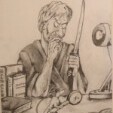






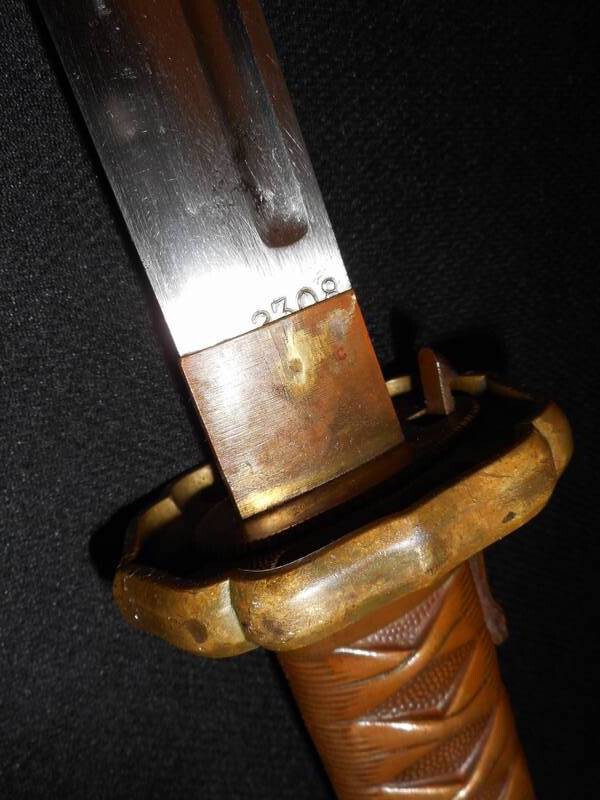


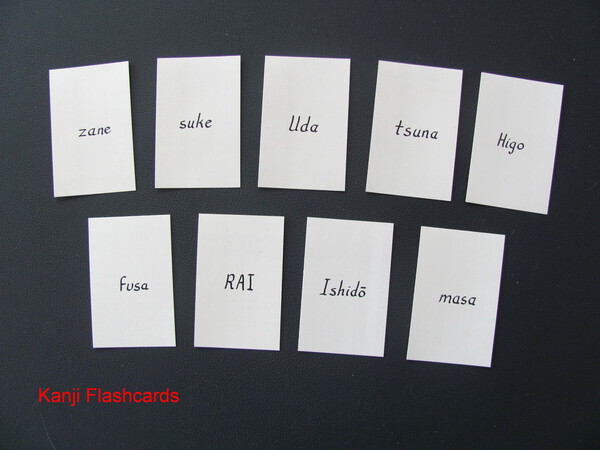
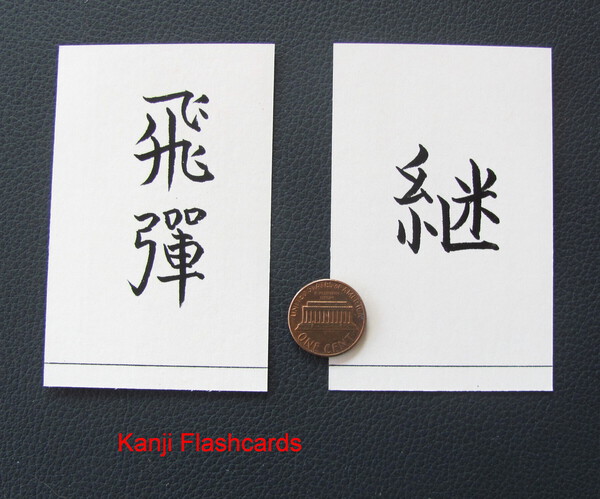


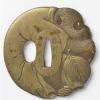
.thumb.jpg.ee681618520348463a726e81d97e95e6.jpg)












